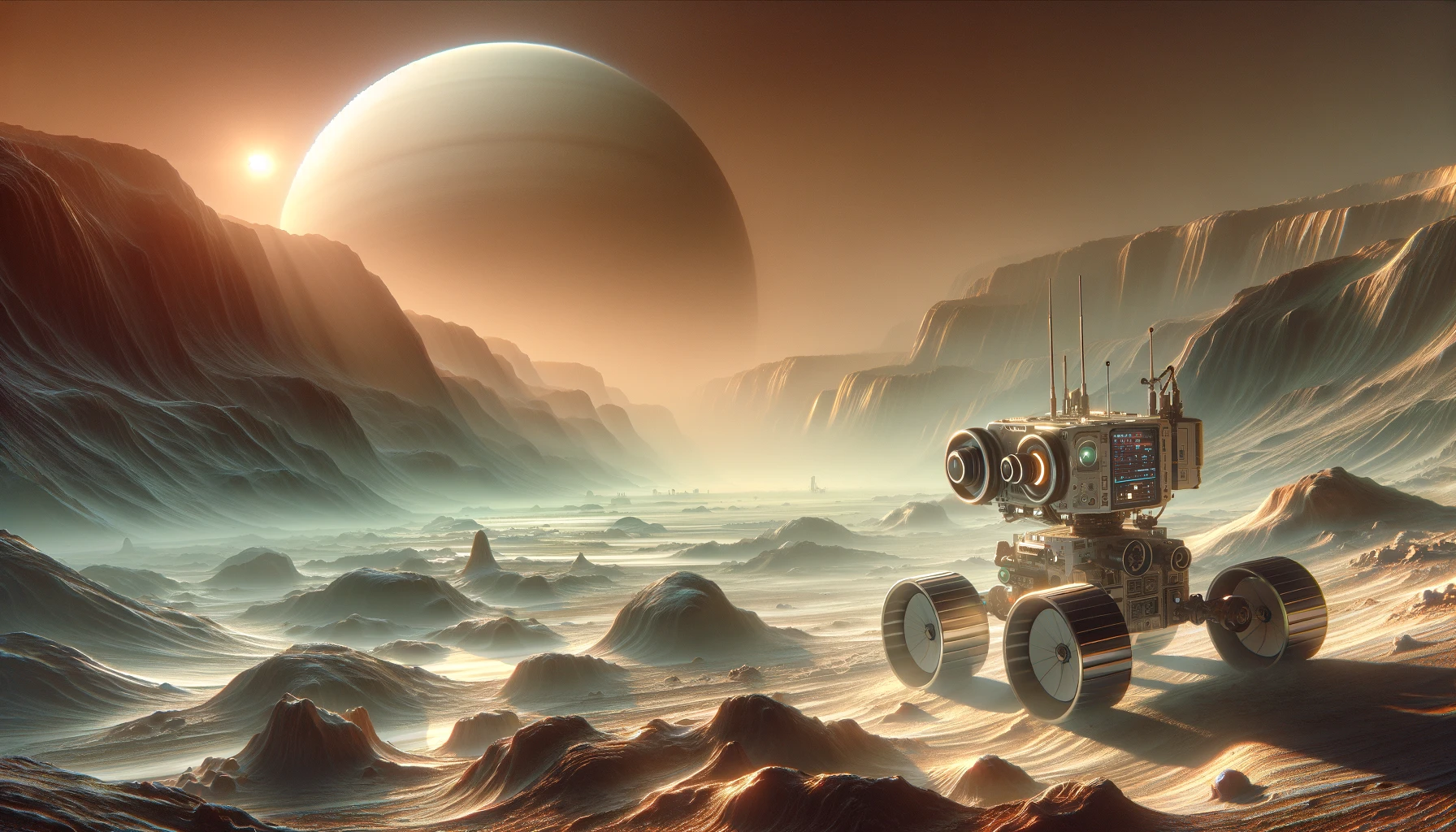Space is the final frontier. Since the dawn of humankind, we have gazed up at the stars and galaxies above, our curiosity and imagination wondering what exists in the vast cosmos. We have made tremendous progress in space exploration over the past few decades, from landing humans on the moon to rovers traversing across Mars and with private companies like SpaceX launching and recovering boosters almost weekly. Yet, there are still countless mysteries about our universe left to uncover.
Artificial intelligence (AI) has the potential to accelerate space exploration unlike anything before. AI can help analyze the massive amounts of data collected from telescopes, satellites, and interplanetary probes to reveal insights faster than ever. It can guide robotic spacecraft to explore harsh or dangerous environments without risking human lives. AI may enable self-sufficient robot scientists to operate independently on distant planets and moons.
Let’s examine three ways in which AI could propel space exploration into the future:
1. Discovering New Planets and Stars Faster
The Kepler space telescope launched a breakthrough in discovering planets, identifying over 2,600 exoplanets or planets outside our solar system. Yet analysing the enormous datasets from Kepler and follow-up telescopes like TESS involves teasing out faint signals from noise.
AI algorithms can rapidly pore through billions of data points from telescope observations to uncover patterns. These AI systems can spot anomalies and variations that indicate the presence of a planet that might take humans weeks or more to detect. This enables the discovery of new exoplanets faster and assesses their potential to support life.
Beyond exoplanets, AI can analyze galaxy images and star formations from the Hubble Space Telescope, leading to discoveries about the composition and evolution of stars, supernovae, black holes, and other celestial objects. Training AI algorithms on large labelled datasets creates highly accurate models for continuously extracting new insights from space images at scale.
2. Safely Navigating Spacecrafts in the Harshest Environments
Landing and operating spacecraft on planets and moons is a highly complex process. The environments have unknown terrain, debris, turbulent storms and a variety of other hazards. Trying to remotely control rovers millions of miles away with a delayed signal leads to slow and very limited exploration.
AI and machine learning can enable spacecraft, landers and rovers to navigate autonomously. AI vision algorithms can process real-time video feeds as they descend towards the surface and detect ideal landing zones. AI path planning can then determine safe routes for rovers to explore varied topography without human intervention.
NASA’s Mars Perseverance rover takes this a step further by using its AEGIS AI system to map uncharted terrain and identify areas that might most likely contain rock or soil samples with signs of microbial life—allowing the rover to explore faster and focus data and images back to Earth on the most scientifically valuable locations.
AI will be crucial for future exploration of Jupiter’s moon, Europa, and Saturn’s moon, Enceladus, where rovers will need to navigate thick ice sheets autonomously. It can also enhance virtual reality interfaces for scientists on Earth to collaborate in decision-making for rovers light years away.
3. Enabling Robot Scientists and Bio-Inspired Space Architectures
In the longer term, AI may enable highly advanced robots that operate for years on planets, moons, asteroids, and even interstellar space entirely autonomously. These robot scientists can conduct experiments, build shelters and infrastructure, and even construct replicas of themselves.
AI algorithms would extract chemicals and minerals from regolith on the surface to produce fuel, water, air and other resources. Bio-inspired space architecture based on complex algorithms can construct self-sustaining habitats optimized for atmospheric conditions and protection from radiation, debris, and extreme temperatures.
Robot scientists powered by strong AI could achieve broad goals from Earth, such as setting up a long-term Mars research observatory. Their AI algorithms would then determine how to achieve these goals based on the environment and available resources. If robots run low on energy, AI would guide them in identifying deposits of metals and silicates to extract the materials needed to produce more solar panels.
While still decades away, AI and robotics may eventually enable the establishment of an independent, growing colony on Mars or other celestial destinations. These initiatives could start small, like a tiny seed leading eventually to a prospering space civilization co-existing with humans back on Earth.
The Future is Bright
While space exploration began thousands of years ago when ancient astronomers charted the skies, AI is launching it into an unprecedented era. AI can automate complex data analysis to reveal insights faster, safely navigate hazardous planetary environments, and even enable autonomous robot scientists and architects.
Combining AI’s capabilities with human curiosity, creativity, and problem-solving will unlock humanity’s unlimited potential to explore space. Just like innovations in sailing ships, navigation instruments, propulsion, electronics, and computing precipitated the golden age of exploration on Earth, AI will spur the same magnitude of progress off the planet.
What wonders will AI help discover in the final frontier and beyond in the decades to come? One thing is sure – with AI as our copilot, space is no longer the limit.
